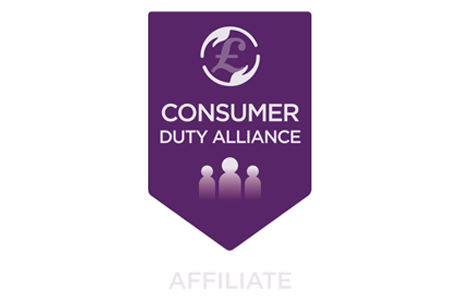The Aggregator Market - Friend or Foe?

Richard Howes
27 October 2023For some perspective, it is believed the digital/aggregator market contributes to around 5/6% of a mainstream large Lender’s value and volume. These same Lenders receive on average 85% of lending through intermediaries, and 8% through telephony. The obvious exception is branches which ranges from 0% to 3%. For the mathematicians reading this, these are average figures!
Many Lenders provide access to their products in this area, the main lenders “working” consistently, with the aggregators are Santander, Nat West, Nationwide, and to a lesser extent perhaps Barclays, and Lloyds. The aggregators we are talking about are Money Supermarket and Compare the Market, to the lesser known ones such as Times Money Mentor, Koodoo, and Nerd Wallet. Most work with a panel of 18 aggregator firms either connecting directly or through a third party channel.
Talking to the Lenders in this space, and some who are not fully committed to it, gives an interesting perspective on today’s and tomorrow’s market from a perspective of the customer of the future, and the adviser of the future.
The overwhelming perspective from the Lenders to the question should brokers advisers be worried about this distribution channel is ‘No!’, but they would say that, wouldn’t they?
When looking at this market as we have at Paradigm, maybe not. Its clear the main Lenders see this as a supplementary vehicle for lending, but do they see it having the capability and volumes to increase from the current market share to say 12/13%? Then they all answer unequivocally no. The main reason is based around the fact that, if the numbers were to move, they would have done so by now, and would have done significantly in a buoyant market with very low interest rates as we have experienced in the years 2020, 2021 and 2022.
This channel is very price sensitive, and has moved in recent years to one where the average age of a customer was 35+ looking to re-mortgage, to customers now aged 32-33 and are First Time Buyers (FTBs). There appears to be no geographical or employment bias, although many report the North West is a confident area. Thus, it’s no surprise when Lenders report the numbers looking to progress after completing a soft footprint AIP fall dramatically when looking at applications and completions because of this ‘new’ type of customer.
As mentioned, price sensitivity is crucial and in a high rate environment such as now, people appear to get put off. Many use the digital channel as a platform for research and then pivot into the channel of choice once they have decided to act. Thus, from a FTB perspective they have certainty the Lender will lend, but they then get a choice, and its this choice that see’s in the main, advisers win out.
The trick is to ensure for your business this remains, for the sake of your business.
The difficulty the digital market has is managing the ‘drop off’ or fulfillment rates as they are seen as too high, but as a consequence of the technology available and the customer base looking at this area it is seen as the price you pay. Although, Lenders report if they have connectivity straight- through with the brand of aggregator then that works better than with a third party involved. However, as with all matters technology wise, developments Lenders will adopt in the future could see a subtle bounce in accessibility and thus completions.
It is here where ChatGPT and generative AI could be a significant influencer. Interestingly, statistics show in 2 months ChatGPT took on 100 million subscribers, it took Tik Tok 1 year to do this. But Lenders are, as everyone else is, just beginning to undertake their journey in this area. Whilst they don’t know what they don’t know, they are willing to devote time and resources to it to see where the savings, simplicity and speed that AI could offer can benefit them.
The development of the digital and aggregator journey does depend on speed. Currently it is estimated it takes 28-30 minutes to complete an application, developed and ready to adapt technology will shortly see this drop to 15-20 minutes (although there are reservations if the application is in joint names etc.), and so we go on! But, the assumption here is that customers are getting it “right first time” and this is where this channel loses out to the intermediary sector. Digital is dependent on pulling off, understanding and acting on consented information, it needs Open Banking to be understood and working for the customer, digital KYC’s and relevant bureau data.
The good news from an adviser perspective, is a lot of the development around speed of process done in this channel translates over into the intermediary space. Plus, the model looks at tomorrows customer enabling advisers to work faster, quicker and more efficiently than Lenders can. It is perhaps this area advisers can benefit from where a more efficient process will be required and attractive to tomorrows customer which may have different expectation levels of customer service, perhaps preferring access and speed to real relationships? But at the same time advisers can use their relationship skills with that cohort of customers that require and need it.
It’s clear that the digital channel is not going away with Lenders, it’s a cheaper distribution channel than other areas given its appeal to a significantly smaller customer base, which is one reason it will stay. But, perhaps the answer is to embrace some of it, disregard other aspect of it, but at all times be aware of it and make sure you can adapt, adopt quickly and efficiently.
Below is some further information you may find useful in this area:
Morovus: SAAS platform for upgrading Websites into Journeys
AI: Fast Futures: https://www.fastfutures.com/gen-ai/
Salary Finance: https://www.salaryfinance.com/uk/
Money Supermarket: https://corporate.moneysupermarket.com/about-us/business-model
Compare the Market: https://www.comparethemarket.com/about-us/


